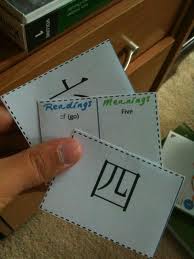Now a third-year University student, I have been studying Japanese since I was in middle school with only a one-year break during my senior year of high school. While I do not pretend to be the perfect student, I feel that other Japanese language students could potentially learn from the numerous experiences I have attained over the years.. Here are three tips for all of you studying Japanese out there:
1. Buy a “Denshijisho” (electronic dictionary)
Despite having studied Japanese since middle school, I did not purchase an electronic Japanese-English dictionary until this year. Now, I could not imagine studying Japanese without it. Where before I would spend time searching through paper dictionaries or even looking up kanji in the thick Nelson dictionary I was required to purchase for my University, I can now just type in words to my denshijisho or draw kanji on its electronic pad. While I admire those who have mastered the use of the Nelson and other Japanese-English dictionaries, I much prefer the instant results I get from my denshijisho.
One downside of denshijishos is their cost, and this is what kept me from buying one over the years. A new one runs from $200-$300, and they are constantly being updated with new dictionaries and features. I bought one from Sharp’s last generation for around $160 and it works just fine. After finally pulling the trigger on this expensive piece of equipment, I am only mad that I didn’t buy one earlier
Some of my friends have told me that they get the same or better capabilities as my denshijisho from cheap apps on their smartphones or ipads, and one even purchased a denshijisho game cartridge for his Nintendo DS. If you already possess a smartphone, ipad, or DS, these devices, you could save a lot of money by pursuing one of these options.
2. Make Kanji Flashcards/Use Anki
I used to study kanji in list form, with the characters, furigana, and English definitions arranged in rows. While I could quickly memorize a fair amount of kanji, I found that I was only memorizing them in a specific order, and I was unable to identify them when they were taken out of this list format. From that point on, I began making my own kanji flashcards. It takes a fair amount of time to make the cards themselves, but to me it has been worth it as I can study kanji anytime, anywhere, and I can easily review kanji i learned in the past.
Recently, electronic solutions have made studying kanji flashcards even easier. For one thing, you don’t have to spend all that time making the flashcards. More importantly, you don’t have to make the hairy decisions on whether you are ready to put a flashcard to in the “completed” pile and move on to new ones. Instead, you can just press a button ranging from “easy” to “difficult” and the program will decide when to show you that flashcard again.
The most popular flashcard app among my ryugakusei friends is Anki. Anki allows you to either choose your own flashcard lists or download other people’s lists from the internet. While I am still running through physical flashcards I created long ago, I intend to make the switch to Anki once I finish studying them.
3. Talk to Japanese People
Out of the exchange students I know who did not speak any Japanese prior to coming here, there is a clear-cut difference in skill between those who have sought out Japanese conversations and those who have been too nervous to try. I urge those who are coming here to take every opportunity to practice their spoken Japanese, as I find it to be both more fun and more instantly gratifying than classroom learning. It is not a replacement for studying, as casual conversation cannot teach you proper grammar or kanji, but what it can do is increase your vocabulary immensely as well as your speaking and listening skills. Plus, it is a great feeling to converse with Japanese friends in their native language!
I hope you find my tips helpful. Nihongo no benkyou wo Ganbare!






